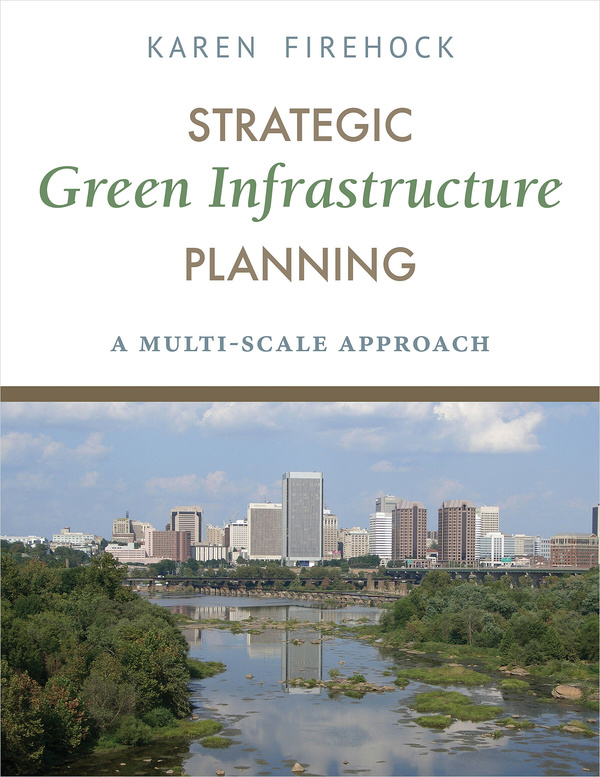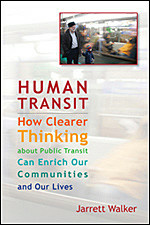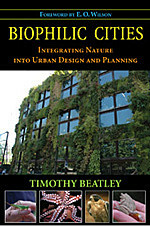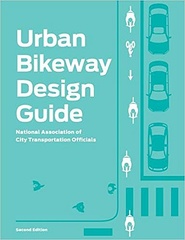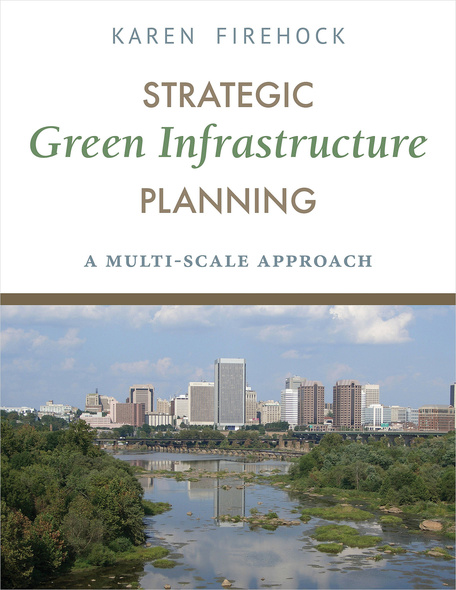
160 pages, 8 1/2 x 11
80 photos, 67 illustrations
Paperback
Release Date:30 Sep 2015
ISBN:9781610916929
From New York City's urban forest and farmland in Virginia to the vast Sonoran Desert of Arizona and riverside parks in Vancouver, Washington, green infrastructure is becoming a priority for cities, counties, and states across America. Recognition of the need to manage our natural assets—trees, soils, water, and habitats—as part of our green infrastructure is vital to creating livable places and healthful landscapes. But the land management decisions about how to create plans, where to invest money, and how to get the most from these investments are complex, influenced by differing landscapes, goals, and stakeholders.
Strategic Green Infrastructure Planning addresses the nuts and bolts of planning and preserving natural assets at a variety of scales—from dense urban environments to scenic rural landscapes. A practical guide to creating effective and well-crafted plans and then implementing them, the book presents a six-step process developed and field-tested by the Green Infrastructure Center in Charlottesville, Virginia. Well-organized chapters explain how each step, from setting goals to implementing opportunities, can be applied to a variety of scenarios, customizable to the reader's target geographical location. Chapters draw on a diverse group of case studies, from the arid open spaces of the Sonoran Desert to the streets of Jersey City. Abundant full color maps, photographs, and illustrations complement the text.
For planners, elected officials, developers, conservationists, and others interested in the creation and maintenance of open space lands and urban green infrastructure projects or promoting a healthy economy, this book offers a comprehensive yet flexible approach to conceiving, refining, and implementing successful projects.
Strategic Green Infrastructure Planning addresses the nuts and bolts of planning and preserving natural assets at a variety of scales—from dense urban environments to scenic rural landscapes. A practical guide to creating effective and well-crafted plans and then implementing them, the book presents a six-step process developed and field-tested by the Green Infrastructure Center in Charlottesville, Virginia. Well-organized chapters explain how each step, from setting goals to implementing opportunities, can be applied to a variety of scenarios, customizable to the reader's target geographical location. Chapters draw on a diverse group of case studies, from the arid open spaces of the Sonoran Desert to the streets of Jersey City. Abundant full color maps, photographs, and illustrations complement the text.
For planners, elected officials, developers, conservationists, and others interested in the creation and maintenance of open space lands and urban green infrastructure projects or promoting a healthy economy, this book offers a comprehensive yet flexible approach to conceiving, refining, and implementing successful projects.
This is a how-to book…It rests on the premise that green infrastructure is 'the sum of all our natural resources,' but it is not about stopping or rolling back development. Instead it is about a systematic way for a community to decide 'what is important and to develop a rationale for what to protect, ending up with four or five specific goals that everyone can agree on.'
This guide addresses a wide audience: planners, developers, city managers, landscape architects, architects, scientists, and others interested in how and where to develop or conserve land. Its simple and pleasant writing makes it valuable for professors, students, citizen groups, and conservationists. The examples given from the U.S. are applicable worldwide. It is a useful book that provides tools and tips, and I strongly recommend it.'
Green infrastructure is now a commonly accepted urban planning concept. Yet knowledge about how to put together a comprehensive plan remains limited. With this excellent book, everything changes. Karen Firehock utilizes her many years of hands-on experience working with communities around the country to produce this indispensable guide.
'A long-awaited, clear and concise guide on how communities, land management and conservation entities can incorporate natural assets into their planning process for a viable return on their investment.'
Strategic Green Infrastructure Planning is practical and insightful. It provides a clear, step by step process for bringing consideration of green infrastructure into any community planning process. Based on years of real world expereince, it's a 'must read' for anyone interested in creating and sustaining communities that are ecologically and economically healthy.
This book offers a comprehensive process that integrates conservation across scales. At a county level, there is always a need to link local conservation priorities with regional or statewide priorities, and this book’s approach readily translates across a range of stakeholder groups with varying interests and technical skill sets.
The future of society depends on protection of natural capital that is the foundation of sustainable systems: green infrastructure. Firehock provides a well-documented and organized book about lessons learned from the efforts of the Green Infrastructure Center.
Karen Firehock is director and co-founder of the Green Infrastructure Center. She has more than twenty-five years of experience in planning and natural resources management, and is an adjunct lecturer in green infrastructure planning at the University of Virginia’s School of Architecture. She has won multiple awards for her planning work, including a Renew America Award for the Nation’s Best Water Protection Program, a National River Greenways Award, and State Conservationist of the Year award.
Preface
Introduction
Chapter 1. Green Infrastructure Overview
Chapter 2. The Need to Evaluate and Map Natural Features
Chapter 3. Organize Your Initiative
Chapter 4. How to Identify, Evaluate, and Prioritize Natural Assets
Chapter 5. Case Studies from Region to Site
Chapter 6. National Case Studies
Chapter 7. Using Models and Spatial Data to Create Natural Asset Maps
Bibliography
About the Author
Introduction
Chapter 1. Green Infrastructure Overview
Chapter 2. The Need to Evaluate and Map Natural Features
Chapter 3. Organize Your Initiative
Chapter 4. How to Identify, Evaluate, and Prioritize Natural Assets
Chapter 5. Case Studies from Region to Site
Chapter 6. National Case Studies
Chapter 7. Using Models and Spatial Data to Create Natural Asset Maps
Bibliography
About the Author

